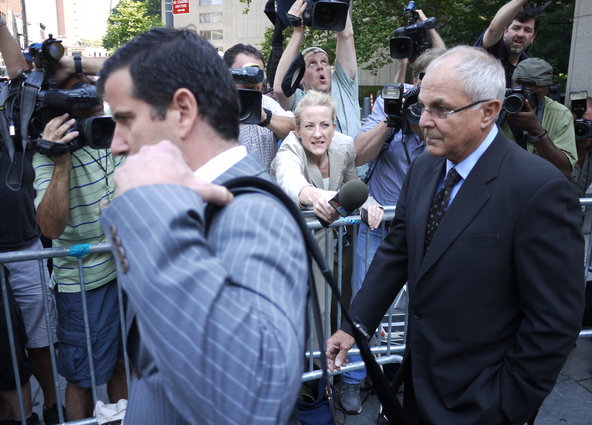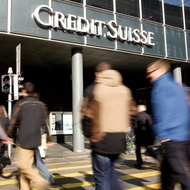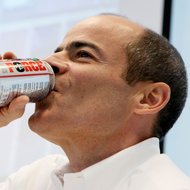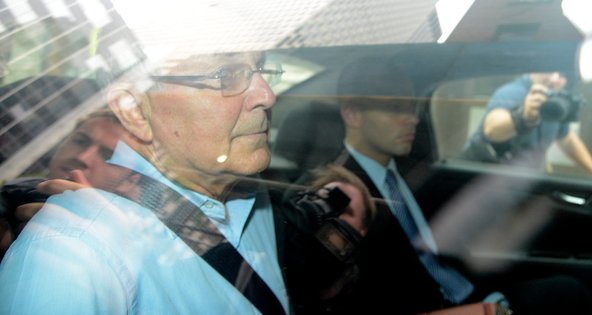4:04 p.m. | Updated

Laura D’Andrea Tyson is a professor at the Haas School of Business at the University of California, Berkeley, and served as chairwoman of the Council of Economic Advisers under President Bill Clinton.
This week’s economic summit among European leaders has exceeded expectations. New ground has been broken in an agreement that would allow Europe’s joint rescue funds to be used to recapitalize struggling banks in European Union member states and that would establish a single bank supervisory mechanism under the European Central Bank.
Today’s Economist
Perspectives from expert contributors.
Global markets have responded with initial relief to the agreement that is designed to stem a worsening banking crisis in the euro zone, a crisis that poses an immediate and existential threat to the euro.
Although many details are still uncertain, the agreement appears to be an important step in the right direction. But much more remains to be done to put the euro on a sustainable path for the future and reverse Europe’s slide into recession and stagnation.
The economic and political crises confronting Europe’s leaders today are the result of more than three years of misdiagnosis and policy errors.
At the beginning of the crisis, Europe as a whole was in good financial health. Its current account was balanced, its government debt-to-gross domestic product ratio was lower than those of the United States and Japan and its total leverage ratio was about the same as in the United States.
Spain and Ireland were hailed for their fiscal rectitude, with far lower debt-to-G.D.P. ratios than Germany. Private investors were not worried about default risk on Spanish or Irish debt or about Italy’s chronically sizable sovereign debt, which was largely held and serviced by Italy’s high-saving citizens.
Deluded by the convergence of bond yields after the euro’s introduction and overlooking the fact that Europe lacked both a lender of last resort and an integrated fiscal authority, investors fed a private-sector credit boom in Europe’s less developed periphery countries, failing to recognize real estate bubbles in Spain and Ireland and the Greek government’s slide into insolvency.
When global growth slowed sharply and credit flows collapsed in the wake of the Great Recession, throughout the euro zone government revenues plummeted, governments were forced to socialize private-sector liabilities and government deficits soared.
With the exception of Greece, the deterioration in public finances was a symptom of the crisis, not its cause. Moreover, the deterioration was predictable: the real stock of government debt soars in the wake of recessions caused by financial crises. (Federal government debt in the United States has also increased for the same reason.)
But European leaders, spearheaded by Germany, diagnosed the problem as one of fiscal profligacy for which fiscal austerity is the essential and painful cure. According to the austerity logic, significant rapid reductions in government deficits are a precondition to restoring government credibility and investor confidence, stemming contagion, bringing down interest rates and restarting growth.
Austerity has not worked; indeed, it has been counterproductive. In countries crushed by onerous austerity targets, growth and employment have fallen, along with government revenues. Austerity has undermined, not bolstered, market confidence.
Investors, like voters, recognize that stagnation and high unemployment enlarge government deficits and debt in the short run. Markets have lost faith in the sovereign debt of Spain and Italy, and now even France is threatened. Contagion is apparent both in high government borrowing costs, driving solvent countries into insolvency, and in capital flight, driving solvent banks into insolvency.
Both Greece and Portugal are snared in classic debt traps as the interest rates on their sovereign debt have soared beyond their growth rates by considerable margins, and Spain is on the brink. France, Italy and Spain now face considerably higher interest rates on their sovereign debt than Britain, although its fiscal position is considerably worse.
Now Europe requires several complicated and politically contentious measures to stem the crisis and foster growth.
First, Europe needs immediate measures to stabilize financial markets. This week’s summit agreement appears to be an important first step. It allows resources from the 500-billion-euro rescue fund, the European Stability Fund, to be used directly to recapitalize systemically important banks.
Financially beleaguered national governments cannot do this, and lending them the funds to do so only aggravates their sovereign debt problems, as the recent bailout plan of the Spanish banks confirms. Euro-zone funds are essential to break the adverse feedback loop between sovereign debt and bank balance sheets at the national level and to stem deposit and capital flight from troubled banks. The agreement is designed to do this.
The agreement also calls for the establishment of a Europe-wide supervisory authority under the European Central Bank to approve the use of rescue funds for bank recapitalization. Longer term, Europe needs a banking union with a unified regulatory and supervisory mechanism, a unified deposit insurance plan paid for by bank fees and resolution authority under the central bank’s control.
The agreement also allows for the possibility that euro rescue funds can be used to purchase the sovereign debt and lower the borrowing costs of Italy and Spain – “virtuous” countries that are under speculative market attack as they struggle to adhere to the harsh deficit targets of Europe’s fiscal compact.
If the euro-zone rescue fund proves insufficient for these purposes – as seems likely – new euro bonds jointly backed by all members of the European Union, including Germany, should be introduced to raise additional funds. Moral hazard is the major argument against such bonds, but moral hazard can be contained both by limiting the amount and duration of such bonds and by restricting their use to nations adhering to the fiscal compact and to banks subject to supervision by the European Central Bank.
In the meantime, the European Central Bank can and should provide additional funding to ease the banking crisis through expansion of its existing long-term lending facility for banks and through possible “quantitative easing,” or the expansion of the central bank’s balance sheet to purchase bank and other private sector debt.
According to the European Union treaty, the European Central Bank is precluded from purchasing the sovereign debt of member states, so it cannot serve as a lender of last resort for them, as the Federal Reserve can and does for the United States government. An optimal single-currency area requires a lender of last resort for its member states, and Europe does not have one. This is a major institutional void that undermines the euro’s stability.
But the European Central Bank does have authority to set its interest rate, and it should cut the rate to near zero to stimulate growth in the absence of inflationary pressure.
Germany, with a modest fiscal deficit, record low interest rates on its government bonds and a huge current account surplus, primarily with its European partners, should also foster European growth through fiscal stimulus measures, including providing funds to increase euro-zone-wide infrastructure spending through the European Investment Bank and dedicated special project bonds.
Germany emphasizes the importance of structural reforms for growth — but such reforms are supply-side measures that take time. Chancellor Angela Merkel appears to have forgotten that it took more than a decade and about two trillion euros of subsidies for structural reforms to make the former East Germany competitive with the rest of Germany.
Right now, demand and access to credit are the main impediments to euro-zone growth. Moreover, structural reforms are harder to achieve in a contracting economy; they result in more transitional unemployment and wasted resources and they undermine political support.
The liberalization of national restrictions on the service sector is probably the most powerful structural reform Europe could undertake, but even Germany is doing little in this politically sensitive area.
At this week’s summit meeting, Europe’s leaders debated ambitious long-term plans for both a banking union and a fiscal union with central budgetary authority. Both kinds of unions are essential pillars for a sustainable euro in the future.
Perhaps agreement on this long-term plan will provide political cover for Germany to support the short-term measures required now: broader uses for Europe’s rescue funds, the issuing of euro bonds, more aggressive measures by the European Central Bank and a significant growth pact.
Time is running out, and immediate actions are required. The fate of the euro, the stability of global capital markets and the strength of the United States and global recoveries depend on what Europe’s leaders decide.
Article source: http://economix.blogs.nytimes.com/2012/06/29/what-must-be-done-now-to-save-the-euro/?partner=rss&emc=rss







